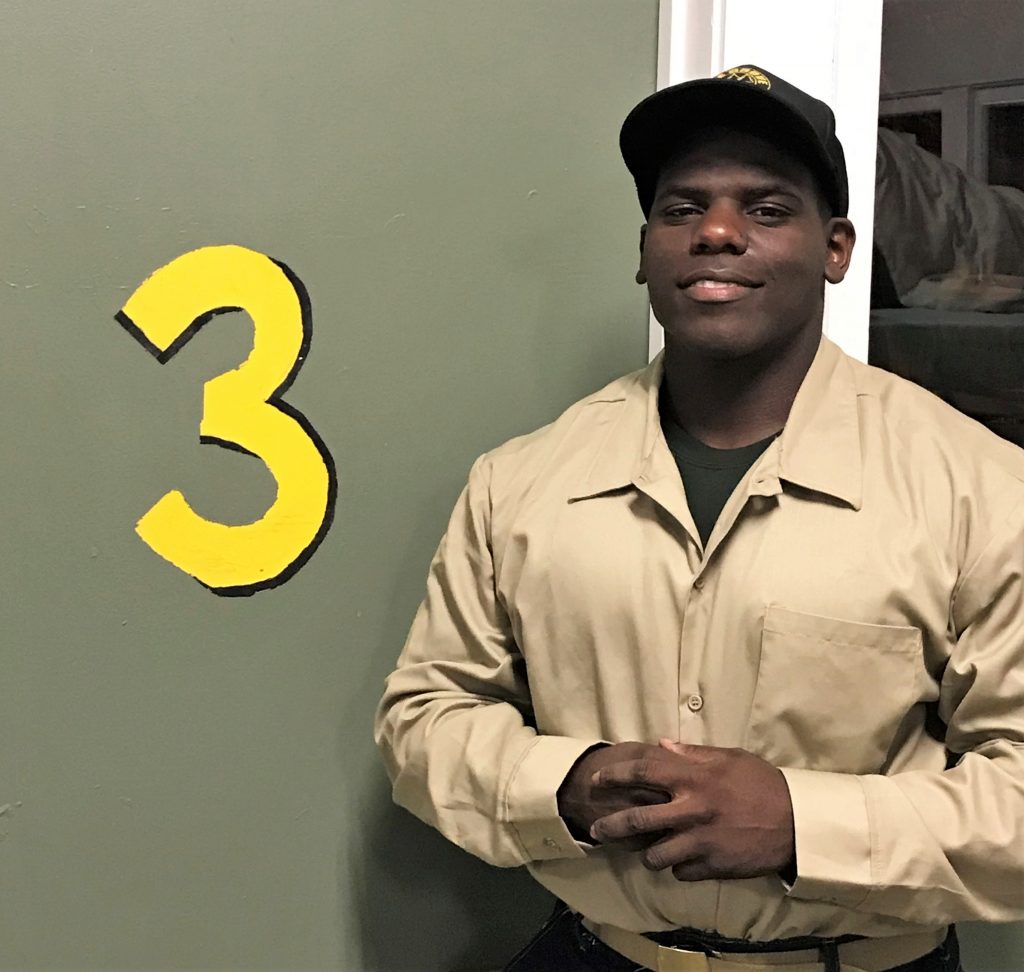By Claudette Perrin, Youth Correctional Counselor
Pine Grove Youth Conservation Center
In January 2020, Derrick Williams became the first Proposition 57 CalFIRE Wildland Firefighter I graduated from Pine Grove Youth Conservation Camp.
When he was 15, Williams was convicted on serious charges in adult court. He was sent to an adult institution. Now, due to voter-approved Proposition 57, he qualified to be retried as a juvenile. He was re-sentenced, this time receiving a two-year term to be served in the Division of Juvenile Justice (DJJ), where he was received March 11, 2019. When he is released in fall 2020, he will be 25.
His DJJ journey began June 4, 2019, when he arrived at N.A. Charderjian Youth Correctional Facility. He received rehabilitative treatment services at O.H. Close Youth Correctional Facility and arrived at Pine Grove Youth Conservation Camp on Christmas Eve 2019.
“As a kid, I always looked up to and respected firefighters. They represented teamwork and togetherness. I am grateful for the blessing this chance has given me for a future. For someone who got off to a rocky start as a teenager, as an adult, my goals are to give back to society in a positive way and continue to help others.”
Derrick Williams
“What a gift,” he said he thought as he settled into the unusual surroundings of a juvenile open-dorm campus setting.
Split rail fence, free movement, gym program, second helpings at dinner, a fresh salad bar, event activities, and day-room program were all perks for Williams as he set his goals to do well and be successful in the CalFIRE Wildland Firefighter program offered at Pine Grove.
Williams said he asked himself, “How, can my life have changed so much in such a short period of time?”
“I am thankful to Proposition 57 and what it did for me,” Williams said as he talked to staff about the recent hope he has found. “I will use this opportunity to pursue a career in Wildland Firefighting. As a kid, I always looked up to and respected firefighters. They represented teamwork and togetherness. I am grateful for the blessing this chance has given me for a future. For someone who got off to a rocky start as a teenager, as an adult, my goals are to give back to society in a positive way and continue to help others.”
According to Pine Grove staff, he has displayed appropriate social skills with youth, peers, educators, staff, and community members.
Williams has shown the ability to function in a rehabilitative, employment-driven environment in a non-violent manner. He has displayed productive leadership on his assigned CalFIRE crew and has promoted to a more responsible position.
He has aspirations of becoming a leader of the fire crew prior to release.

What is Proposition 57?
In November of 2016, Proposition 57 was passed to enhance public safety, stop the revolving door of crime by emphasizing rehabilitation, and prevent federal courts from releasing inmates. Under Proposition 57, CDCR incentivizes inmates to take responsibility for their own rehabilitation with credit-earning opportunities for sustained good behavior, as well as in-prison program and activities participation.
Proposition 57 also moves up parole consideration of nonviolent offenders who have served the full-term of the sentence for their primary offense and who demonstrate that their release to the community would not pose an unreasonable risk of violence to the community.
These changes will lead to improved inmate behavior and a safer prison environment for inmates and staff alike, and give inmates skills and tools to be more productive members of society once they complete their incarceration and transition to supervision.
Information taken from the CDCR website.
